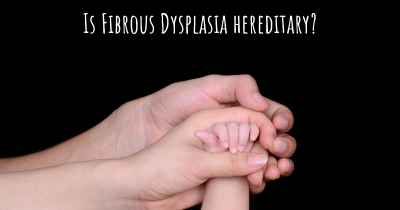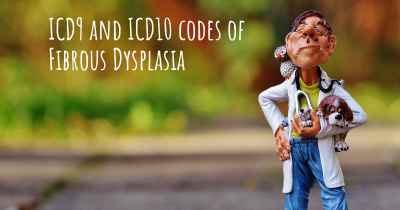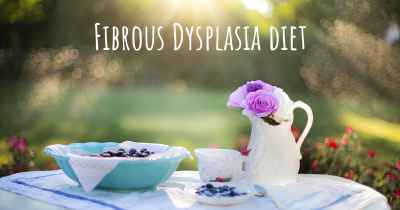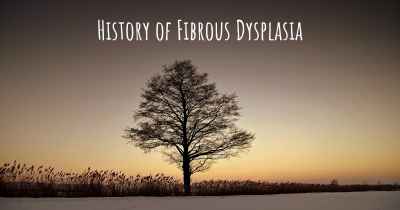Living with Fibrous Dysplasia. How to live with Fibrous Dysplasia?
Can you be happy living with Fibrous Dysplasia? What do you have to do to be happy with Fibrous Dysplasia? Living with Fibrous Dysplasia can be difficult, but you have to fight to try to be happy. Have a look at things that other people have done to be happy with Fibrous Dysplasia
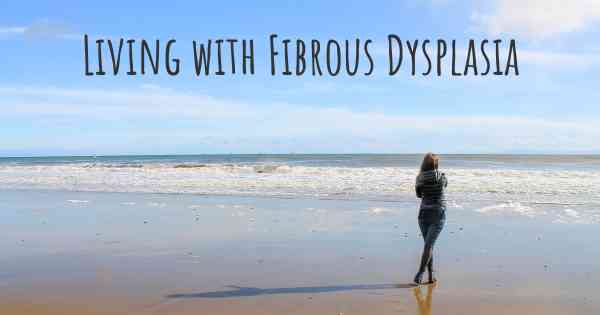
Living with Fibrous Dysplasia
Fibrous Dysplasia is a rare bone disorder that can affect various parts of the body, including the skull, facial bones, long bones, and pelvis. Living with Fibrous Dysplasia can present unique challenges, but with proper management and support, individuals can lead fulfilling lives. Here are some strategies and tips to help navigate life with Fibrous Dysplasia:
1. Educate Yourself
Knowledge is power when it comes to managing Fibrous Dysplasia. Take the time to learn about the condition, its symptoms, potential complications, and available treatment options. Understanding your condition will empower you to make informed decisions about your health and communicate effectively with healthcare professionals.
2. Build a Support Network
Living with Fibrous Dysplasia can be emotionally and physically challenging. Surround yourself with a strong support network of family, friends, and healthcare professionals who understand your condition and can provide the necessary support and encouragement. Joining support groups or online communities can also connect you with others who share similar experiences.
3. Regular Medical Care
Regular medical care is crucial for managing Fibrous Dysplasia. Work closely with your healthcare team, including specialists such as orthopedic surgeons, endocrinologists, and pain management specialists. Regular check-ups, imaging tests, and blood work can help monitor the progression of the condition and identify any potential complications.
4. Pain Management
Pain is a common symptom of Fibrous Dysplasia. Work with your healthcare team to develop a personalized pain management plan. This may include over-the-counter pain relievers, prescription medications, physical therapy, or alternative therapies such as acupuncture or meditation. Finding the right combination of treatments can help alleviate pain and improve your quality of life.
5. Exercise and Physical Therapy
Engaging in regular exercise and physical therapy can help improve strength, flexibility, and overall well-being. Consult with your healthcare team or a physical therapist to develop an exercise plan that suits your abilities and limitations. Low-impact activities such as swimming, yoga, or tai chi can be beneficial for maintaining bone health and reducing the risk of fractures.
6. Nutrition and Bone Health
A balanced diet rich in calcium and vitamin D is essential for maintaining bone health. Consult with a registered dietitian to ensure you are getting adequate nutrients to support your bone strength. If necessary, your healthcare team may recommend supplements to meet your nutritional needs.
7. Emotional Well-being
Living with a chronic condition like Fibrous Dysplasia can take a toll on your emotional well-being. It is important to prioritize self-care and seek support when needed. Engage in activities that bring you joy, practice stress management techniques, and consider counseling or therapy to address any emotional challenges you may face.
8. Adaptations and Assistive Devices
Depending on the severity and location of Fibrous Dysplasia, you may require adaptations or assistive devices to enhance your mobility and independence. Work with an occupational therapist or physical therapist to identify any necessary modifications to your home or workplace. Assistive devices such as canes, braces, or orthotics may also be recommended to improve your mobility and reduce the risk of falls.
9. Stay Positive and Seek Opportunities
Living with Fibrous Dysplasia can be challenging, but maintaining a positive mindset and seeking opportunities for personal growth can make a significant difference. Focus on your strengths, set realistic goals, and celebrate your achievements. Engage in hobbies, pursue education or career opportunities, and surround yourself with positive influences.
Remember, Fibrous Dysplasia does not define you. With proper management, support, and a positive outlook, you can live a fulfilling life.
Posted Jun 9, 2017 by Lisa Hill 2050
Posted Jul 21, 2017 by Debra 2000
Posted Sep 9, 2017 by Debby 1200
Posted Oct 7, 2017 by Kiesha brown 3050
Posted Oct 23, 2020 by anna_d09 2500
Posted Jan 17, 2021 by Emmy 2250


